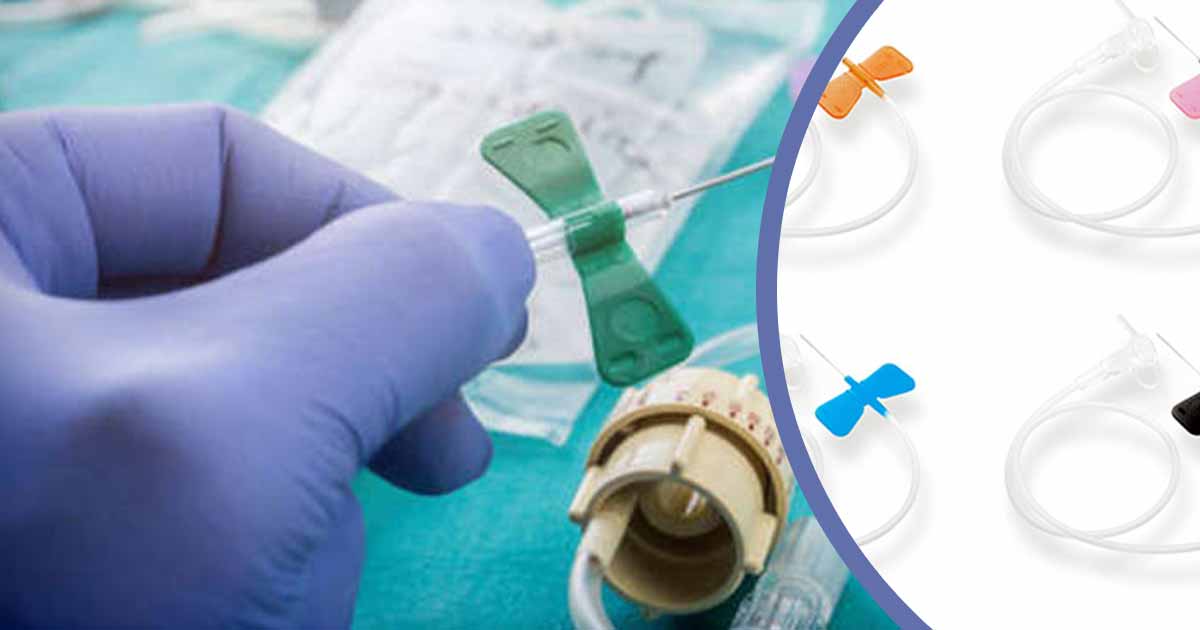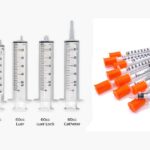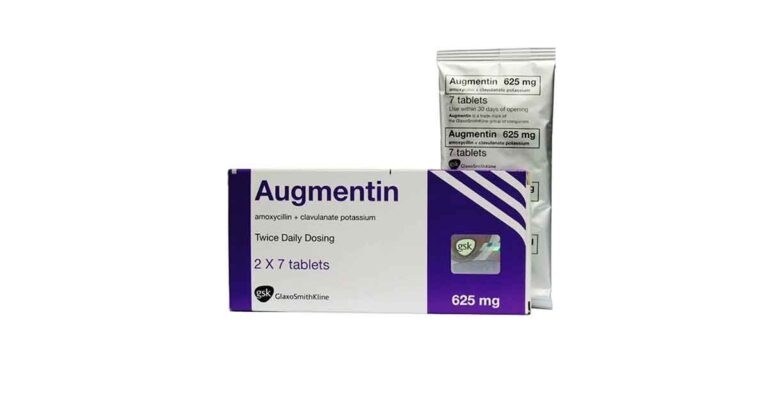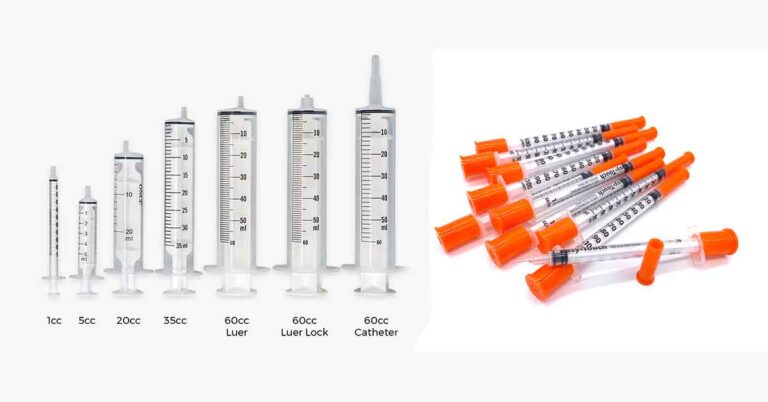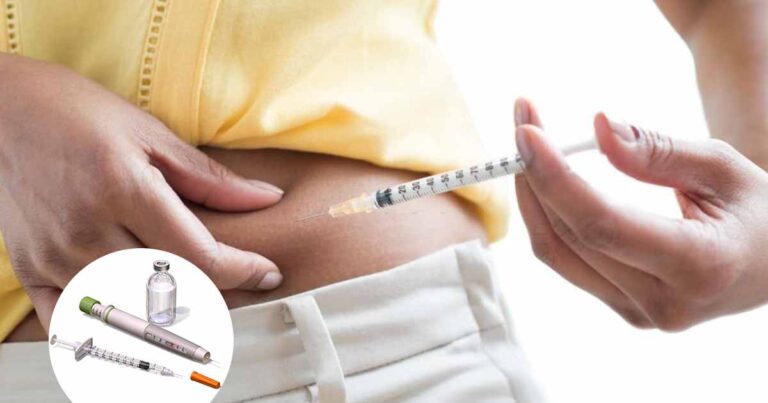Scalp vein set, or winged infusion set, is used in routine blood collection procedure and during short-term intravenous infusion. It is used in treating pediatric patients and in venipuncture.
The set is used to puncture a vein in a patient’s hand, wrist, or scalp and administer IV fluid or phlebotomy. This is an important step in sick infants and children, by making using the peripheral site of administration.
The set is made of two wings, cannula (hypodermic needle), soft transparent tube (20-35 cm long), tip hub (Luer slip, Luer Lock) that connects the scalp vein set to another device, and protective covering. The needle is designed to be sharp, cause minimal pain and trauma to the tissues, and reduce the risk of infections. It is usually made of high grade stainless steel.
The protector or protective covering helps to prevent blood-borne disease infection by concealing the needle.
The design of the scalp vein set is done in such a way to provide rapid access to the vein, and also be comfortable for the patient during infusion. The design include winged infusion set, ultra-thin wall with sharp bevel needle, and kink free P.V.C. tube.
The winged needle has a safety shield, that can be activated to cover the needle immediately after the collection of the blood or starting of IV infusion to protect against accidental needle stick injury.
Different Sizes of the Scalp Vein Sets
The scalp vein sets have different injection needle sizes and lengths to ensure the correct size is selected during cannulation. The various sizes are also color coded to help in identification and selection.
- 18G – pink
- 19G – cream
- 20G – yellow
- 21G – dark-green
- 22G – black
- 23G – dark-blue
- 24G – violet
- 25G – orange
- 26G – brown
- 27G – gray
The 21G and 23G are the most widely used. The small bore scalp vein sets are use mostly for children, while the larger bore scalp vein set are used for adults. But, the vein size and the type of medicine is an important consideration in choosing the size to use.
Some medical experts avoid the 25G and 27G butterflies in phlebotomy due to the belief that smaller-bore needles could damage the blood cells and cause clotting of blood samples.
Parts of a scalp vein set (Nipro Medical)
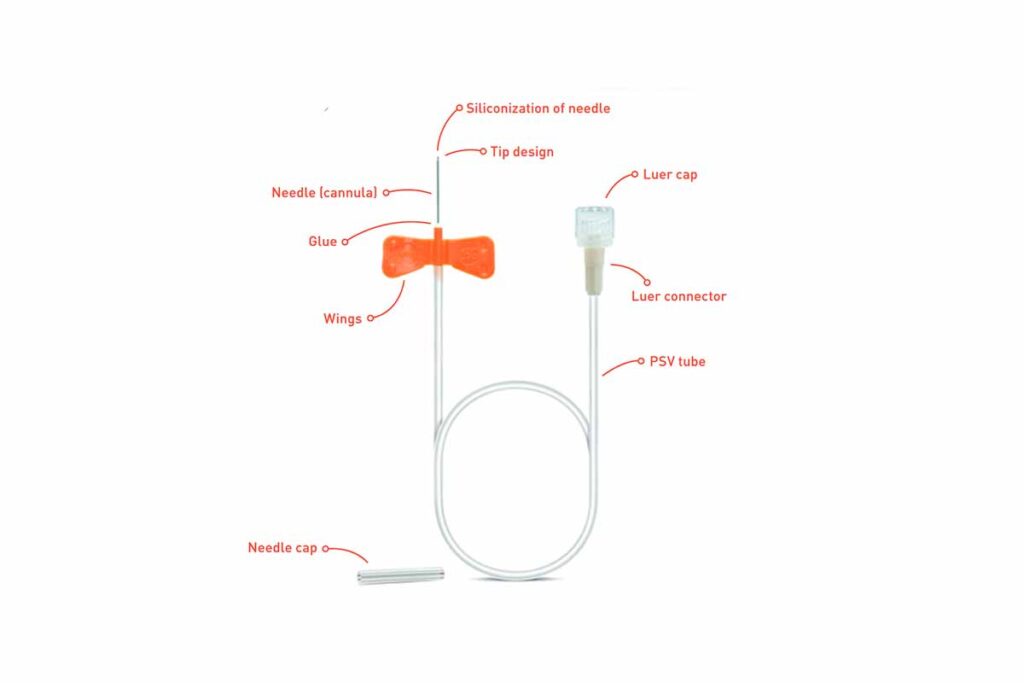
Types of Scalp Vein Sets
There are mainly four types of scalp vein sets depending on the requirements in a patient. They are:
- Single wing luer lock
- Single wing luer slip,
- Butterfly wing luer lock, and
- Butterfly wing luer slip
Single Wing
In the single wing scalp vein set, the needle is joined to the tube through the luer lock or luer slip, tightly screwed to prevent fluid leakage. It is used mostly for intramuscular and subcutaneous injections.
Single Wing (Pediatric)
The pediatric single wing has a single wing and a smaller needle than other regular single wing scalp vein sets, as they are used for infants. Both of them work in similar way.
Butterfly Wing
This type has double winged tab that improves control and precision. The needle is attached to the tube with a luer lock or luer slip. This is to make sure it is screwed tightly into position and prevents leaks.
The two wings helps in easy and secure positioning in the body.
Small butterfly needles are suited for patients whose veins are not easily accessible, and for infants, children. Larger butterfly needles are better when large volume of bloods are needed for test.
Main Uses of Scalp Vein Set
Scalp vein set is designed for venipuncture and intravenous infusions. It provides rapid venous infusion with comfort.
It is used for one-time blood sampling, injection of small volume of drugs or blood products. Also, for small-diameter veins in infants and children, and also normal veins of adults
Main Advantages of Scalp Vein Sets
- There are different types to cater for specific patients needs
- Already sterilized and ready to use
- It is cheap
- The sharp needle helps to reduce pain, injury, or trauma
- Prevents the risk of infection of HIV, hepatitis to healthcare givers, patients through accident.
- Easy to use, and requires less training
- The protective cover conceals the needle, preventing the transmision of infection.
How to Use the Scalp Vein Set
To use the scalp vein for puncturing, place the wings between the index finger and thumb. Hold the set near the needle to ensure good control and locating the correct vein position. This will prevent slippage of the needle.
On penetration of the vein, a small volume of blood makes it way into the tubing. This is normal as it shows the vein is correctly penetrated.
Carefully release the plunger slowly, and the needle from the vein.
What to Consider while Using Scalp Vein Set
The scalp vein set should be for single-use to prevent transmission of diseases such as HIV, hepatitis. It is also non-toxic, non-pyrogenic, and sterile. The shelf-life is usually 5 years. Before use:
- Check for the sterility validity, expiry, batch number and make sure the packaging is intact
- Do not use if the envelope is broken, or the validity has expired, or the cap is falling off.
- Use immediately after opening the envelope and discard after single use.
- Do not infuse lipid based solution as they increase the risk of endocrin disruption in children, infants or pregnant women.
- Avoid re-sterilization of the needle as they may cause cross-contamination and infection.
- Use the device in a sterile surface without fluid or contamination
- Keep the needle away from the body while using to avoid accidental pricking.
- Do not touch the needle with bare hands to avoid contamination.
References
- https://www.vogt-medical.com/fileadmin/user_upload/scalp-vein-sets__1_.pdf
- https://www.advacarepharma.com/en/medical-devices/scalp-vein-sets
- https://www.t-injecta.sk/images/IFU-CHIRANA/IFU_Scalp%20Vein%20Set%20CHIRAFLEX/IFU%20for%20Scalp%20vein%20set_rev04%20-%20EN.pdf
- https://www.nipro-group.com/sites/default/files/2019-12/Datasheet – Standard Scalp Vein Set -08Nov2018 – Approved_Original_101.pdf
- https://www.kmedhealth.com/what-is-a-scalp-vein-set/

